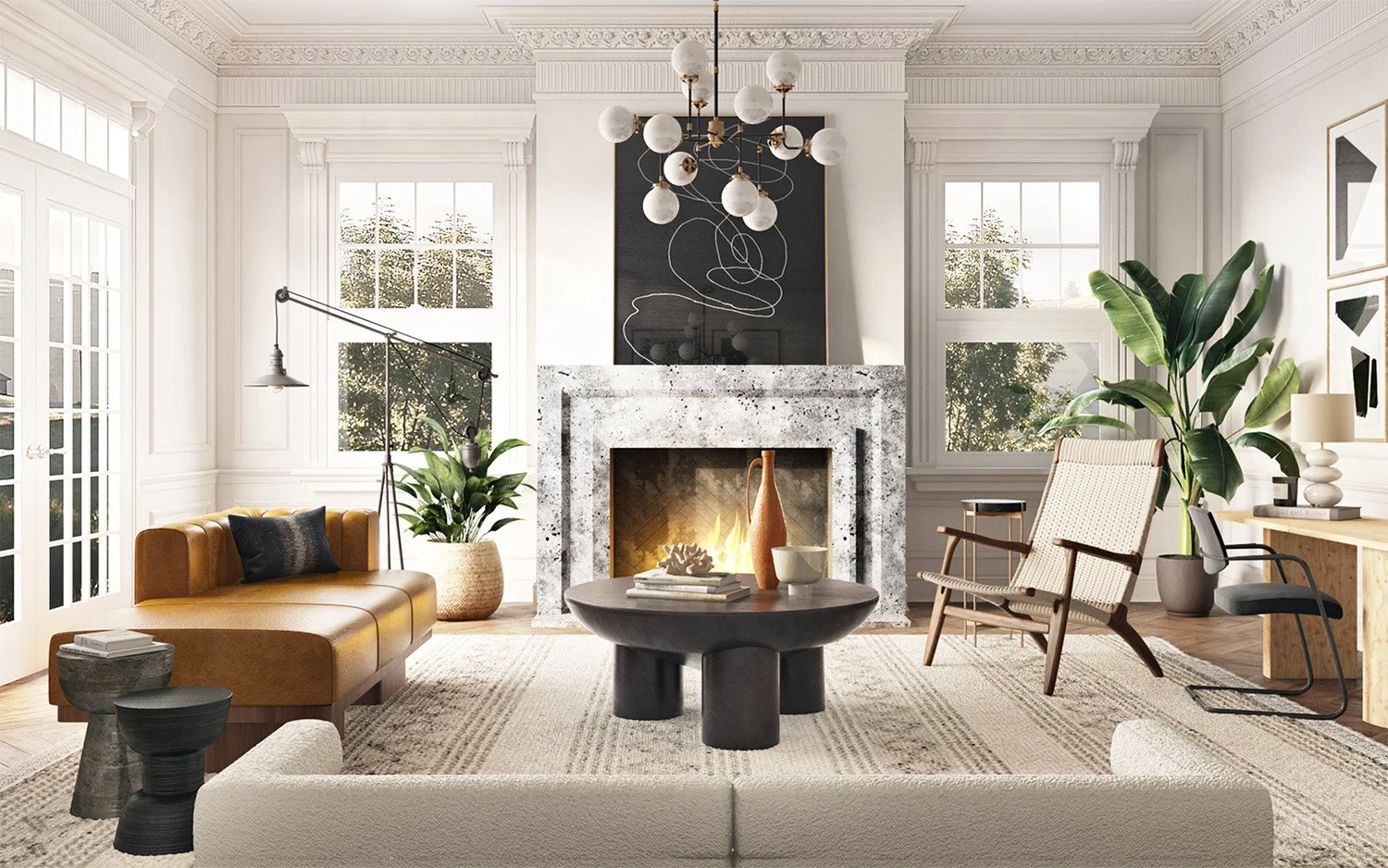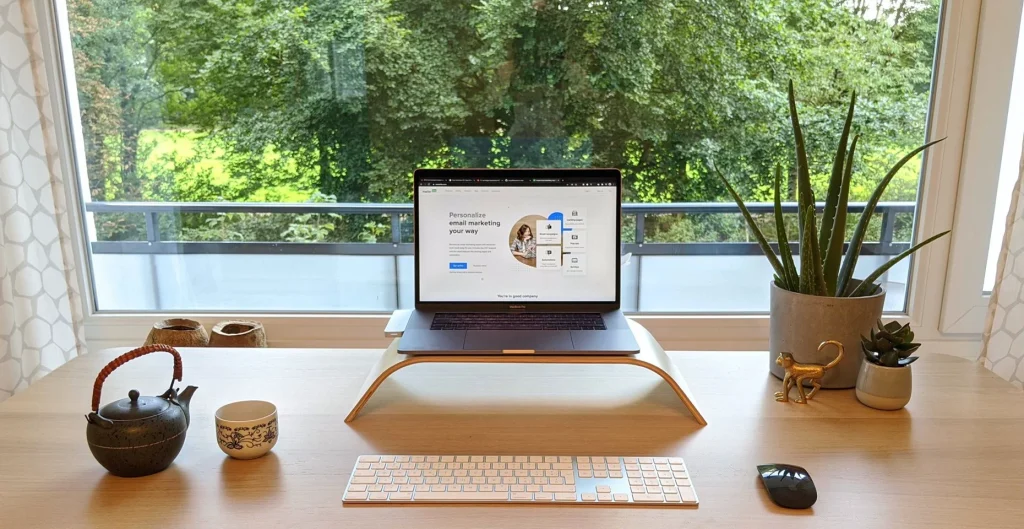Modern vs. Traditional: How To Find Your Interior Design Style
Choosing an interior design style for your home is a deeply personal decision. It reflects your tastes, lifestyle, and personality. Among the most popular and contrasting styles are modern and traditional. Each has its own unique characteristics, benefits, and challenges. In this comprehensive guide, we’ll delve into the key elements of modern and traditional interior design, explore their differences, and provide tips on how to find and blend these styles to create a home that truly represents you.
Understanding Modern Interior Design
Modern interior design, often confused with contemporary design, refers to a specific era from the early to mid-20th century, particularly the 1920s to 1950s. It emphasizes simplicity, functionality, and a lack of ornamentation.
Key Elements of Modern Design:
- Clean Lines: Modern design features clean, straight lines and minimalistic forms. Furniture and architectural elements are often sleek and uncluttered.
- Neutral Color Palette: The color scheme in modern design is typically neutral, with shades of white, black, gray, and beige dominating the palette. Bold accents are used sparingly.
- Natural Materials: Modern interiors often incorporate natural materials such as wood, leather, linen, and stone. These materials add warmth and texture to the space.
- Open Spaces: Modern design favors open floor plans that allow for a seamless flow between rooms. This creates an airy and spacious feel.
- Minimalism: Less is more in modern design. Furniture and decor are kept to a minimum, and each piece serves a purpose. Clutter is avoided at all costs.
- Functional Furniture: Furniture in modern design is often functional and multipurpose. Pieces are designed for comfort and usability without unnecessary embellishments.
- Large Windows: Natural light is a crucial element in modern design. Large, unadorned windows are common, allowing for an abundance of natural light to flood the space.
- Industrial Elements: Exposed beams, concrete floors, and metal accents are often used to give a modern space an industrial edge.
Examples of Modern Design:
- Mid-Century Modern: Characterized by its use of teak wood, simple geometric shapes, and a combination of organic and synthetic materials.
- Scandinavian Modern: Emphasizes simplicity, functionality, and a connection to nature. Light colors, natural materials, and clean lines are key features.
- Minimalist Modern: Focuses on the essence of simplicity. The color palette is restrained, and decor is sparse, creating a calm and uncluttered space.
Understanding Traditional Interior Design
Traditional interior design draws inspiration from the 18th and 19th centuries, incorporating classic elements, rich colors, and ornate details. It is timeless, elegant, and often evokes a sense of history and grandeur.
Key Elements of Traditional Design:
- Rich Color Palette: Traditional design uses a warm and rich color palette. Deep reds, greens, browns, and golds are common, often complemented by neutral tones.
- Ornate Details: Furniture and decor in traditional design feature intricate details and embellishments. Carved wood, decorative moldings, and ornate fabrics are typical.
- Antique Furniture: Traditional interiors often include antique or vintage furniture pieces. These pieces are usually crafted from dark woods like mahogany or cherry.
- Symmetry: Traditional design emphasizes symmetry and balance. Furniture is often arranged in pairs or in a way that creates a harmonious and orderly appearance.
- Patterned Fabrics: Fabrics in traditional design are rich and luxurious, with patterns such as florals, damasks, and stripes. Heavy draperies, upholstered furniture, and decorative pillows are common.
- Classic Architecture: Architectural elements like crown moldings, wainscoting, and coffered ceilings are prevalent in traditional interiors.
- Warm Lighting: Lighting in traditional design tends to be warm and inviting. Chandeliers, sconces, and table lamps with fabric shades are popular choices.
- Decorative Accessories: Traditional interiors are adorned with decorative accessories such as artwork, vases, sculptures, and ornamental rugs.
Examples of Traditional Design:
- Victorian: Known for its opulence and intricate details. Victorian interiors feature rich colors, heavy fabrics, and ornate furnishings.
- Colonial: Inspired by the American Colonial period, this style features simple, sturdy furniture, muted colors, and classic details.
- French Country: Combines rustic charm with elegant details. It includes distressed wood, toile fabrics, and a soft, warm color palette.
Comparing Modern and Traditional Design
While modern and traditional designs are distinct in their characteristics, comparing them can help you understand which elements resonate with your personal style.
1. Color Palette:
- Modern: Neutral and subdued, with occasional bold accents. The emphasis is on creating a calm and serene environment.
- Traditional: Rich and warm, with deep, saturated colors. The goal is to create a cozy and inviting atmosphere.
2. Furniture:
- Modern: Sleek, functional, and minimalistic. Furniture is often low-profile and made from natural materials.
- Traditional: Ornate, sturdy, and often antique or vintage. Furniture features intricate details and rich fabrics.
3. Decor and Accessories:
- Modern: Minimal decor with a focus on functionality. Accessories are kept to a minimum and are often abstract or geometric in shape.
- Traditional: Abundant decor with an emphasis on elegance and detail. Accessories include artwork, vases, and decorative pillows.
4. Layout and Space:
- Modern: Open and airy, with an emphasis on flow and natural light. Spaces are often multifunctional.
- Traditional: Formal and symmetrical, with distinct areas for different activities. Spaces are often more compartmentalized.
5. Materials:
- Modern: Natural materials like wood, leather, and stone, combined with industrial elements like metal and concrete.
- Traditional: Rich, natural materials like dark wood, velvet, and silk, with an emphasis on craftsmanship.
6. Lighting:
- Modern: Natural light is maximized with large windows and minimal window treatments. Lighting fixtures are sleek and functional.
- Traditional: Warm and inviting lighting with chandeliers, sconces, and lamps. Window treatments are often heavy and decorative.
Finding Your Interior Design Style
Finding your interior design style involves exploring your preferences, considering your lifestyle, and being open to experimentation. Here are some steps to help you identify and blend modern and traditional styles to create a space that feels uniquely yours.
1. Reflect on Your Preferences:
- Explore Inspiration: Browse design magazines, websites, and social media platforms like Pinterest and Instagram to gather inspiration. Pay attention to what catches your eye.
- Create a Mood Board: Compile images, colors, and textures that you love. This can help you visualize your preferred style and identify common themes.
- Visit Showrooms: Visit furniture and decor showrooms to see different styles in person. This can give you a better sense of scale, texture, and color.
2. Consider Your Lifestyle:
- Functionality: Think about how you use your space. Do you need a home office, a cozy reading nook, or a play area for children? Your design should support your daily activities.
- Maintenance: Consider the upkeep required for different styles. Modern design tends to be low-maintenance, while traditional design may require more care for delicate fabrics and antique furniture.
3. Blend Styles Thoughtfully:
- Start with a Base: Choose one style as your primary foundation. This could be either modern or traditional, depending on your preference.
- Incorporate Elements: Introduce elements from the other style to add contrast and interest. For example, you could pair a sleek modern sofa with traditional ornate side tables.
- Balance Proportions: Maintain a balance between the two styles to create harmony. Avoid overwhelming the space with too many elements from one style.
- Use Transitional Pieces: Transitional furniture and decor pieces blend elements from both modern and traditional styles, creating a cohesive look.
4. Experiment and Adapt:
- Mix and Match: Don’t be afraid to mix and match different styles, colors, and textures. Experiment with combinations to see what works best for your space.
- Layer Textures: Combine different textures to add depth and interest. For example, pair a smooth leather sofa with a plush velvet throw or a sleek glass table with a rustic wooden bench.
- Update Over Time: Your style may evolve over time, and that’s okay. Update your decor and furniture as your tastes and needs change.
5. Seek Professional Advice:
- Interior Designers: If you’re unsure where to start or how to blend styles, consider hiring an interior designer. They can provide expert advice and help you create a cohesive design plan.
- Design Consultations: Many furniture stores and design studios offer consultations. Take advantage of these services to get personalized recommendations.
Practical Tips for Modern and Traditional Design
Here are some practical tips for incorporating modern and traditional design elements into your home.
Modern Design Tips:
- Embrace Minimalism: Focus on simplicity and functionality. Choose furniture and decor that serve a purpose and avoid clutter.
- Maximize Natural Light: Use large windows, light-colored walls, and minimal window treatments to maximize natural light.
- Choose Neutral Colors: Stick to a neutral color palette with occasional pops of color. This creates a calm and cohesive look.
- Incorporate Natural Materials: Use materials like wood, stone, and leather to add warmth and texture to your space.
- Use Sleek Furniture: Opt for furniture with clean lines and minimal ornamentation. Look for pieces that are functional and comfortable.
Traditional Design Tips:
- Embrace Rich Colors: Use a warm and rich color palette to create a cozy and inviting atmosphere.
- Choose Ornate Furniture: Select furniture with intricate details and craftsmanship. Look for antique or vintage pieces to add character.
- Use Decorative Fabrics: Incorporate patterned fabrics like florals, damasks, and stripes. Use these fabrics for draperies, upholstery, and pillows.
- Add Architectural Details: Include architectural elements like crown moldings, wainscoting, and coffered ceilings to enhance the traditional feel.
- Layer Accessories: Use decorative accessories like artwork, vases, and ornamental rugs to add depth and interest to your space.
Blending Modern and Traditional Tips:
- Create a Focal Point: Use a statement piece that blends both styles as a focal point. This could be a modern sofa with traditional side tables or a traditional chandelier in a modern room.
- Balance Colors and Textures: Use a neutral color palette as a base and introduce rich colors and textures through accessories and decor.
- Mix Furniture Styles: Combine modern and traditional furniture pieces in the same room. Ensure that they complement each other in terms of scale and proportion.
- Use Transitional Pieces: Incorporate transitional furniture and decor that bridge the gap between modern and traditional styles.
- Maintain Harmony: Ensure that there is a sense of harmony and balance in the space. Avoid overwhelming the room with too many contrasting elements.
Conclusion
Finding your interior design style is a journey that involves exploring, experimenting, and understanding your preferences and lifestyle. Whether you lean towards the sleek simplicity of modern design or the rich elegance of traditional design, or a blend of both, the key is to create a space that feels authentic and comfortable to you.
By understanding the key elements of modern and traditional design, comparing their characteristics, and considering practical tips, you can make informed decisions about your home’s interior. Remember, there are no strict rules in design. The most important aspect is that your home reflects your personality and meets your needs.
Embrace the process, enjoy the creativity, and have fun transforming your space into a place where you love to live.

